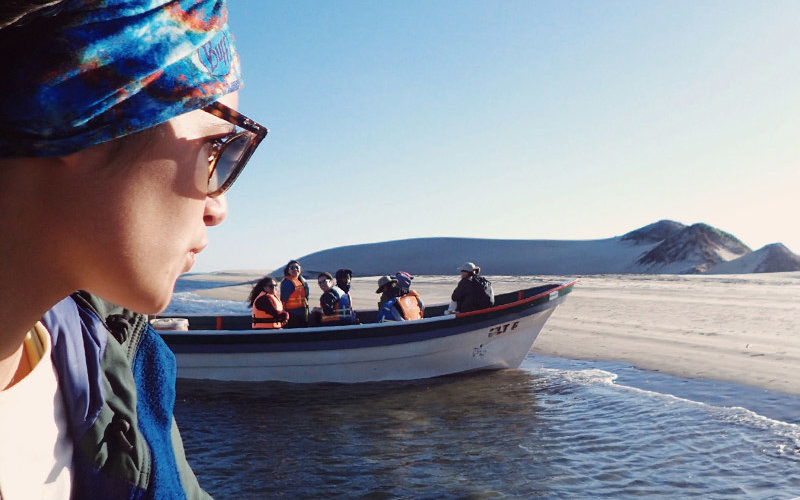
On a family cattle ranch in the Sierra de la Laguna mountains of southern Baja California Sur, Ariana Sanchez learned that overgrazing damaged the dry forest ecosystem. She also discovered that a restoration program can help save it.
Sanchez and her classmates dug trenches to hold water and built debris barriers, or small walls, to capture soil and seeds that would otherwise run off with rainfall. They designed and implemented research projects to measure the recovery process within a fenced area compared to the area still being grazed by cattle.
“This was done to demonstrate to the family how they can improve their restoration efforts and promote the growth of the ecosystem for future generations,” Sanchez explained.
Sanchez and 15 other biological science students — 13 from Cal State Fullerton and three from other California State University campuses — participated in “Capstone Studies in Biology, Baja Conservation and Restoration Ecology,” a new course offered during winter session in January. The course focused on dry forest restoration and a sea turtle monitoring project in Bahia Magdalena, along with lessons on Baja California Sur’s natural history, culture and conservation.
Dry forest is vegetation found in the mountains, in which plant canopies don’t block all of the sunlight, allowing many grasses and small shrubs to grow in the understory, said Darren R. Sandquist, professor of biological science, who led the students on the research trip.
“This makes for good cattle grazing, and most of the Sierra de la Laguna has been heavily grazed by cattle,” he said. “Overgrazing damages the ecosystem, caused by soil loss and reduced forage and tree growth. It’s a dangerous downward spiral.”
The ranch participates in a program that pays ranchers to fence off small parcels of their dry forest areas to prevent grazing. This allows the grasses and shrubs to regrow, Sandquist noted.
“The direct benefit is retention of soil, and eventually partial recovery of the ecosystem,” he added. “The hope is that cattle can then be returned to such parcels and rotated off other overgrazed sites, which then undergo similar recovery efforts. This is a sustainability model.”
The research project showed Sanchez, who is studying ecology and evolutionary biology, that she could apply lessons from classes and be creative and resourceful in the field.
“This trip was meaningful to me because it made me realize what it meant to apply the ecological restoration practices I have learned about in a real, physical way,” said Sanchez, a senior who plans a career in ecological research. “It’s one thing to tell a community what they need to do to conserve their forests, but it’s another to actually be there working with them, digging holes in their overgrazed soil and building rock dams that we hope will be helpful.”
Students also had the opportunity to contribute to a sea turtle-monitoring project with Grupo Tortuguero de las Californias to collect data about sea turtle populations and the recovery of the once abundant reptile in coastal west Mexico. Over a 24-hour period, turtles were captured for the study, then students helped measure their length, width and weight, and also inspected them for parasites. Students caught five sea turtles, three of which had never been tagged, so they named one big turtle “Titan,” Sanchez said.
The data is entered into a national database, which is used to monitor sea turtle population changes and growth patterns, Sandquist added.
During their studies south of the border, students also learned about marine life in the Sea of Cortez, including attending a lecture about the giant whale shark — and some students, like Sanchez, even went swimming with the sharks. Students also prepared literature reviews of a conservation issue and gave presentations on topics such as forest biodiversity, rare animals of Baja, the biosphere reserve system of Baja, and the balance between ecotourism and traditional trades of Baja.
Sandquist was inspired to create the new course because of his new role as director of the California State University Desert Studies Consortium. The seven-campus consortium operates the Desert Studies Center, located within the Mojave National Preserve. The research course abroad is supported, in part, by Associated Students Inc.’s Instructionally Related Activities program.
“I wanted to provide students with the opportunity to study abroad and gain knowledge and experience in conservation, while learning about Baja California Sur, one of the most astounding desert regions in the world.”